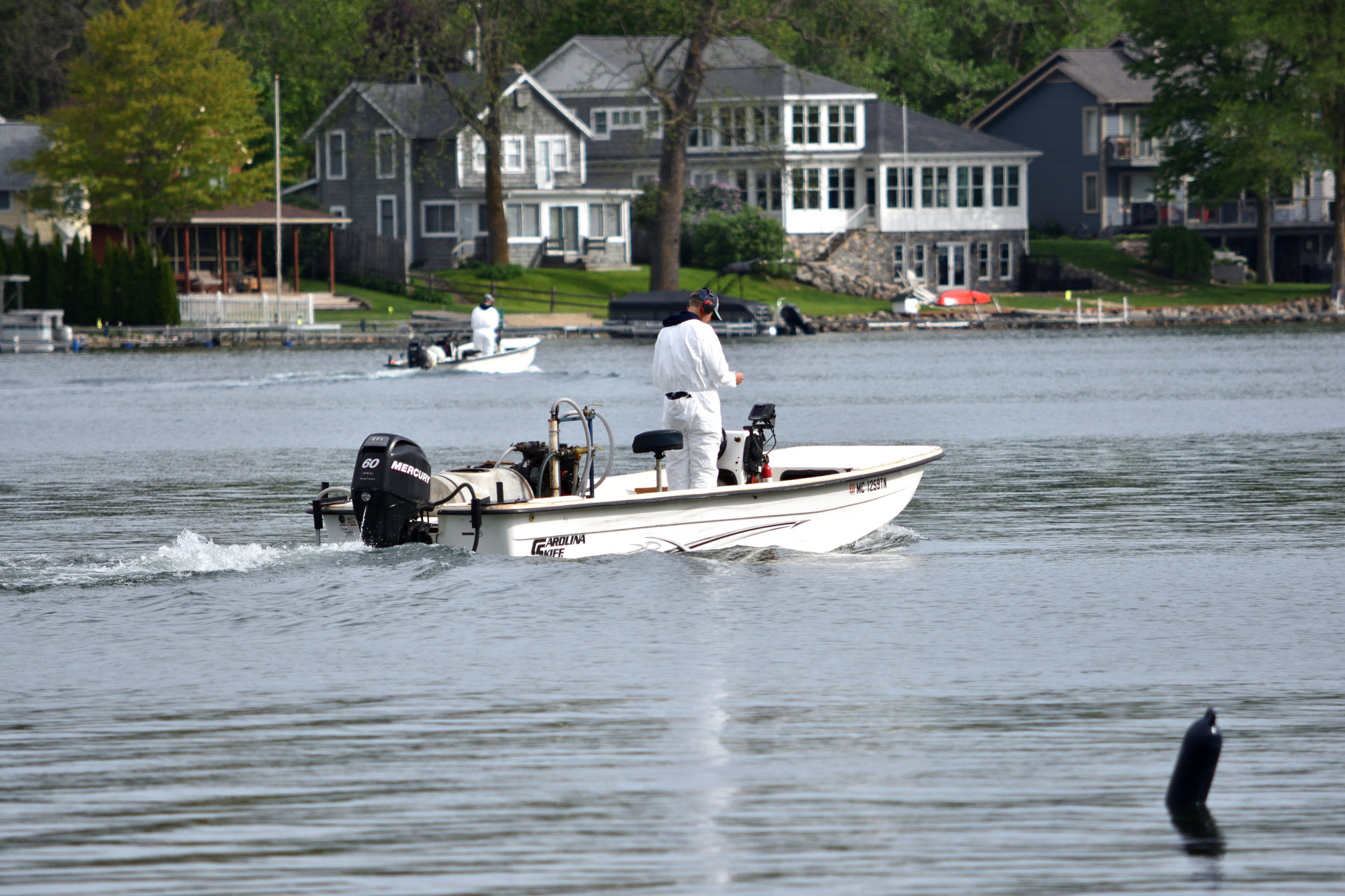This season, PLM treated Clark Lake to rid it of hybrid Eurasian watermilfoil (HEWM), an invasive species. Other lakes found that leaving HEWM infestations unchecked clogged their waters-–reducing boating, destroying wildlife habitat and diminishing property values.
PLM surveyed the lake this fall, and their report is encouraging. The treatment this spring wiped out most of the HEWM with the use of a product called Sonar. The only place HEWM could be found was at the County Park. PLM’s Steve Hanson comments the “milfoil in this area is proving to be extremely resistant to herbicides.” As a result, Steve Hanson recommends using another product next season at the County Park. He thinks ProcellaCOR will be the perfect tool. “Because of the small area and shallow water depth, the cost for ProcellaCOR will be much less than treating offshore areas.” Before making final recommendations, PLM will want to see what comes up in early summer.
Less encouraging was the discovery of Starry stonewort in the lake. It was detected, and treated, at the County Park during the season. A new area, yet to be treated, was found at the Eagle Point Marina boat launch. Steve Hanson adds “Unfortunately, Starry is a macro algae and there are no systemic or long-term herbicides to treat it with. Repeated copper treatments are the best way to keep it knocked down and reduce its chance for spreading.” Past comments from PLM suggests that Starry stonewort acts differently depending on the host lake. It has made a mess of some lakes, but not others.
Starry stonewort has a similar appearance to chara a native plant also found at Clark Lake. PLM notes “Chara is a highly desired species because it is typically low growing, keeps the water clear and can slow down the invasion of exotic weed species. Starry stonewort also forms dense mats, but unlike Chara, it can grow from 5 to 7 feet tall. Starry stonewort can be very detrimental to a lake’s ecosystem and has the ability to kill off native plants and have a negative impact on a lake’s fisheries.”
What vegetation was found in Clark Lake in September 2019? This table is an excerpt from the full report, which is available as a PDF download by clicking here.
PLM recommends these steps for the coming season:
• A spring vegetation survey (to evaluate conditions in the lake and direct management efforts)
• Water quality monitoring should continue
• Early summer herbicide treatment (to control any Eurasian water milfoil and/or Starry stonewort areas that are found)
• Mid summer herbicide treatment, if required
• Mid-summer water quality sampling
• Late summer herbicide treatment, if required
• A fall vegetation survey
• Fall water quality sampling
As part of their work, PLM also conducted a water quality test. Clark Lake’s Dr. Richard Moyer outlined the results on this website, and you can read it by clicking here.
When invasive weeds showed up in Clark Lake, the community took up the fight. Lakefront property owners petitioned Columbia Township to establish a special assessment district (SAD) so that the hybrid Eurasian water milfoil (HEWM) could be eliminated wherever found in the lake. The cost of the program is covered by lakefront owners through property tax. It appears annually as part of the winter tax.
Because of the SAD, Columbia Township is responsible for the program. By clicking here, you can read PLM’s specific proposals. It will be up to the Township board to approve them.













